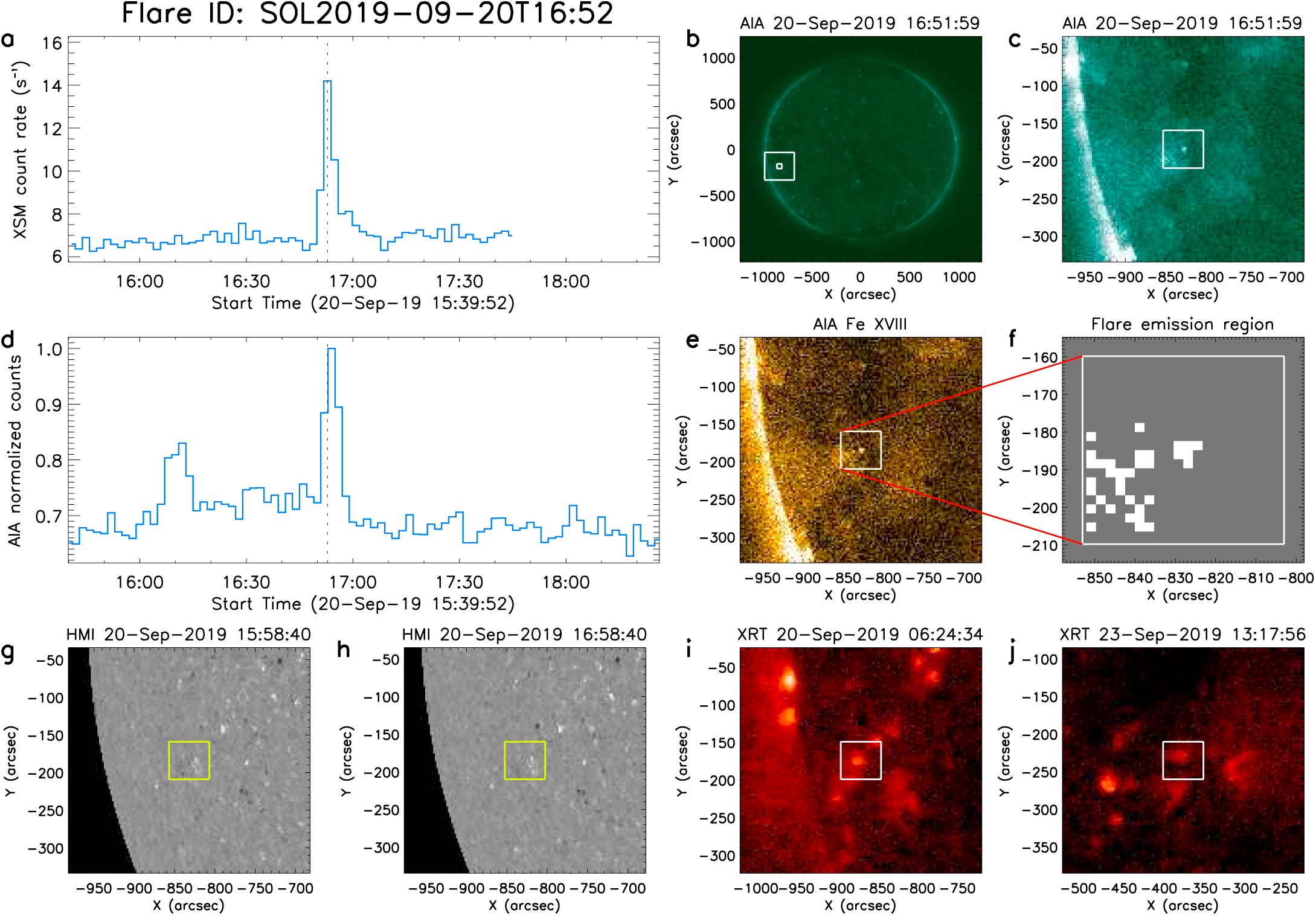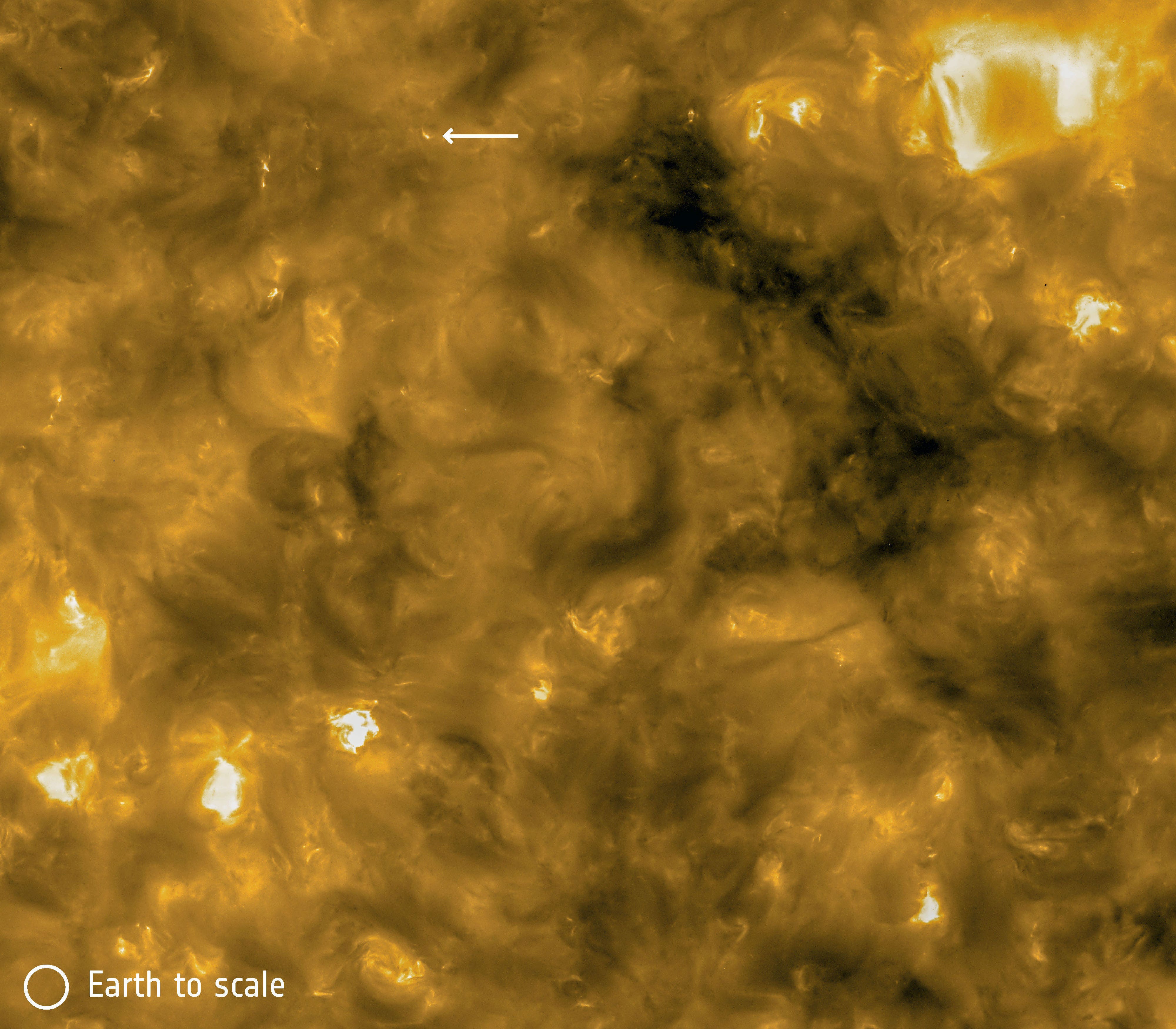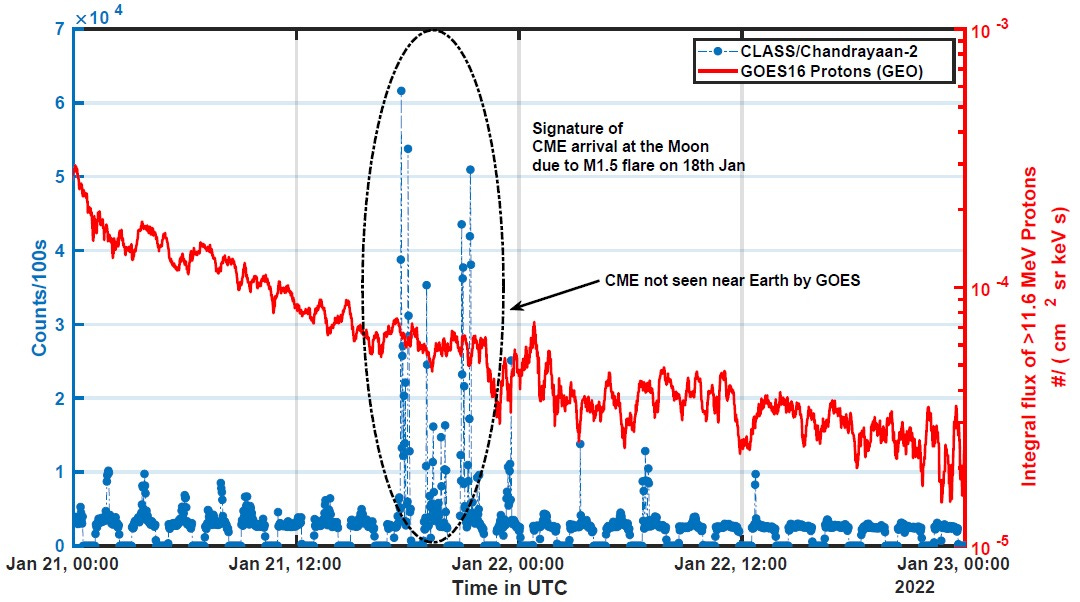India’s Chandrayaan 2 lunar orbiter is also a Sun watcher
India’s Chandrayaan 2 orbiter doesn’t just study the Moon’s surface but also observes the Sun. Its high-resolution Solar X-ray Monitor (XSM) is used to study solar flares and provide a reference for the Chandrayaan-2 Large Area Soft X-ray Spectrometer (CLASS) instrument, which maps elements on the Moon’s surface.
Studying the Sun’s micro-flares
In 2021, Indian scientists published two results based on unique observations by the Chandrayaan 2 orbiter that advance our understanding of our Sun. I’ll quote from the rare but good announcement post ISRO put out on the results (links to research papers added by me):
A remarkable and surprising observation is the detection of a large number (98) of extremely small flares in the quiet corona. These flares are so small that their intensity is well below the standard scale to classify solar flares (i.e. A, B, C, M, and X class flares, where each class is 10 times more intense than previous), and hence these are termed as “sub-A class micro-flares”.
[…]
This was the first observation and statistical study of such a large sample of micro-flares in the quiet Sun, supporting the hypothesis of the presence of even smaller scale flares everywhere on the solar corona that could be responsible for the coronal heating.
The X-ray emission over these 76 days, excluding the durations of the micro-flares, is unusually constant. This is the lowest intensity of X-ray emission observed from the Sun since space-borne observations began. Analysis of the XSM spectra of the quiet Sun, excluding the micro-flares, provided the measurement of abundances of various elements. […] For the first time, absolute abundances of elemental Mg, Al, Si in the quiet solar corona are derived.

This detection of micro-flares is important because scientists think they’re relevant to unlocking a fundamental mystery about our Sun: why is its extended atmosphere, the corona, much hotter than its surface? Scientists have been debating since the 1940s how the Sun’s atmosphere is heated to a million degrees Celsius while the surface remains a scant 6,000 degrees.
The recently launched ESA-led Solar Orbiter mission’s initial close-up images of the Sun have already turned up a promising clue. In 2020, it saw numerous tiny solar eruptions across the Sun’s surface for the first time, each with temperatures around a million degrees Celsius, something which had only been predicted until now. Many scientists think these nano-flares play a major role in heating the corona. While the micro-flares observed by the Chandrayaan 2 orbiter are larger and more intense than these nano-flares, they’re thought to contribute significantly to coronal heating too.

More images over the next few years from the Solar orbiter, including when its orbit will be inclined by 2025 to closely image the Sun’s poles, and continuing micro-flare observations from solar observatories like the Chandrayaan 2 orbiter should hopefully reveal more clues.
Protecting future lunar explorers
In addition to XSM, the Chandrayaan 2 orbiter’s CLASS instrument can detect some solar events too. In January 2022, CLASS detected two highly energetic proton emission events in the solar wind, the incessant stream of charged particles emanating from the Sun.
NASA’s GOES-16 satellite couldn’t detect one of the two events because Earth’s magnetic field provided shielding from said particles. The Chandrayaan 2 orbiter being in lunar orbit could detect the particles, just as other solar observers outside Earth’s magnetic field can.

From August 4 through 7 in 1972, the Sun blurted several bursts of flares and associated energetic particles between the Apollo 16 and 17 missions to the Moon. Had the astronauts been in lunar orbit or on the surface, they could’ve faced damaging levels of radiation. This could, in turn, lead to increased cancer risk.
As we prepare to send astronauts on much longer Moon missions and beyond, we’ll need to protect our explorers from such solar flaring and energetic particles that reach Earth-Moon space in a matter of hours. The Chandrayaan 2 orbiter and other such Sun-watchers are aiding in the same by improving our understanding of solar flares as well as the nature of solar energetic particle events at the Moon.
December 2022 update: Scientists have now published the orbiter’s nano-flare related observations as well, studying which is helping unravel more coronal heating mechanisms.
→ Browse the Blog | About | Donate ♡
